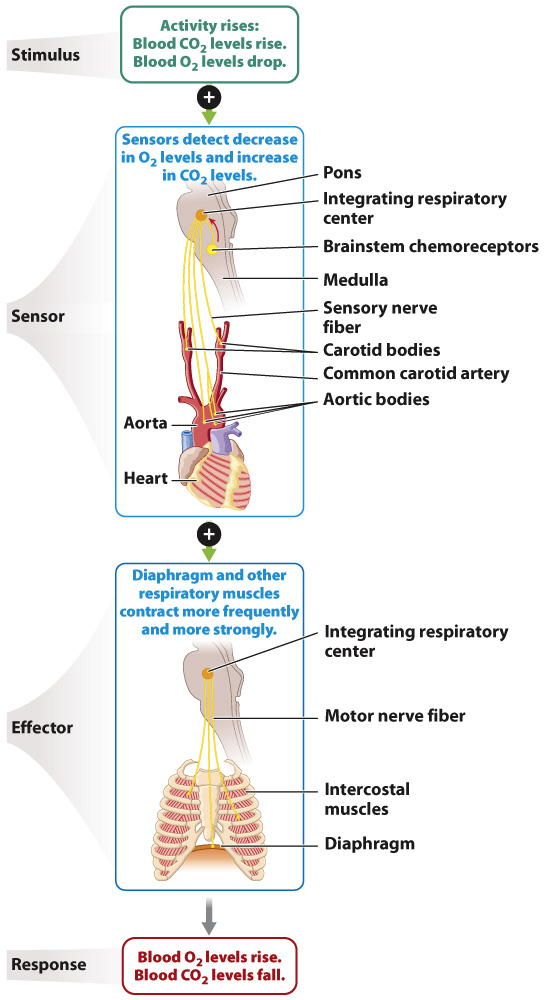Voluntary and involuntary mechanisms control breathing.
Because an animal’s need for O2 varies with activity level, animals adjust their respiratory rate to meet their cells’ changing demand for O2. Respiration is a unique physiological process in that it is controlled by both the voluntary and involuntary components of the nervous system (Chapter 35). In sleep, breathing is maintained at a resting rate by the involuntary part of the nervous system. Indeed, in most circumstances, breathing is controlled unconsciously.
The regulation of blood O2 levels is a key example of homeostasis, like core body temperature (Chapter 35) and blood-

Breathing can also be controlled voluntarily. It is a simple matter to choose to hold your breath. Holding the breath makes it possible for humans and marine mammals to dive under water; it is also critical to the production of speech, song, and sound for communication. Sound is produced by voluntarily adjusting the magnitude and rate of airflow over the vocal cords of mammals, the syrinx of songbirds, or the glottal folds of calling amphibians, such as some toads and frogs.